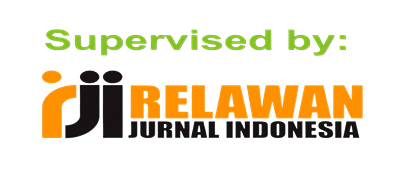DIGITAL VIDEO RECORDED SPEECH TASK BASED PROJECTS TO ENHANCE EFL STUDENTS’ SELF-CONFIDENCE
DOI:
https://doi.org/10.62734/jetling.v3i1.212Keywords:
Digital video, speaking, self-confidenceAbstract
This study was intended to improve students’ self-confidence in speaking at one of Islamic secondary school based in Banyuwangi, East Java, Indonesia by applying digital video recording task based projects. This classroom action research was conducted in one cycle. Each cycle comprised four meetings. In this cycle consisted of planning, implementing, observing and reflecting (Kemmis and McTaggrart, 1999). The participants of this study were 34 students of ninth grade. There were three data collection tools of this study. They were teaching scenario, test and field note. The data were analyzed by using descriptive statistics to know the mean and standard deviation. The result of this study showed that the students’ self-confidence improve when they were taught using digital video recording task based projects. It was indicated by the improvement that 82.35% students are confident that it was initially only 47.05% students. The use of digital video recording task based project in teaching speaking could make the teaching and learning process run interactively and the result suggest that the use of digital video recording task based projects are effective to improve the students’ self-confidence. Based on the findings of the study, the English teacher are suggested to use digital video recording task based projects in teaching speaking in order to make the students interested to practice speaking English.
Downloads
References
Brown, G. and Yule, G. (1999). Teaching the spoken Language. Cambridge: Cambridge University Press.
Brown, H. Douglas (1980).Principle of Language Learning And Teaching. New York : Prentice Hall.
Brown, H. Douglas (2004).Language Assessment Principles and Classroom Practices. New York: Longman.
Castañeda, M., & Rodríguez-González, E. (2011). L2 speaking self-ability perceptions through multiple video speech drafts. Hispania, 94(3), 483-501.
Cheng, G., & Chau, J. (2009). Digital video for fostering self-reflection in an ePortfolio environment. Learning, Media and Technology, 34(4), 337-350, DOI:10.1080/17439880903338614.
Edutopia (2011). Resources and Downloads for Teaching Critical Thinking [Internet].San Lorenzo, CA: KIPP King Collegiate High School.[Accessed 7 April 2017]; Available from:https://www.edutopia.org/stw-kipp-critical-thinking-resources-downloads
Efrizal, D. (2012). Improving Students’ Speaking through Communicative Language Teaching Method atMts Ja-alhaq, Sentot Ali Basa Islamic Boarding School of Bengkulu, Indonesia. Humanities and social science, 12(2).
Global SchoolNet.( 2000). Introduction to Networked Project-Based Learning. [Accessed 7 Juny 2017]; Available from: http://www.gsn.org/web/pbl/whatis.htm
Göktürk, N. (2016). Examining the effectiveness of digital video recordings on oral performance of EFL learners. Teaching English with Technology, 16(2), 71-96
Harmer, J. (2007). The Practice of English Language Teaching (Fourth Edition). London: Pearson Education Limited.
Clark, H and Eve H. Clark,. (1997).Psychology And Language. New York: Harcout Brace Javanovich inc.
Hughes, R. (2006). Spoken English, TESOL, and applied Linguistics: Challenges for Theory and Practice. Chippenham: CPI Antony Rowe.
Ignoffo, M. (1999). Everything you need to know about self-confidence (Rev. Ed.). New York: The Rosen Publishing Group, Inc.
Jack C. Richards, Theodore S. Rodgers (2001). Approaches and Methods in Language Teaching. Cambridge: Cambridge University Press.
Jack Richards C. and Willy A. Renandya,. (2002). Methodology in Language Teaching, New York: Cambridge University Press.
Jones, B. F., Rasmussen, C. M., & Moffitt, M. C. (1997). Real-life problem solving.: A
collaborative approach to interdisciplinary learning. Washington, DC: American
Psychological Association
Kemmis, Stephen, McTaggart, Robin. (1999). The Action Research Planner, Victoria: Deakin University.
Latimer H. and Riordan R. (2011). Project-Based Learning Engages Students in Meaningful Work. Engaging and Motivating Young Adolescent Learners, 11(2), 18-23
Lauster, P. (1978). The Personality Test (2nd.Ed). London: Bantam Books, Ltd.
O’Malley, J. M., & Valdez Pierce, L. (1996). Authentic Assessment for English Language Learners: Practical Approaches for Teachers. New York, NY: Addison-Wesley.
Read Write Think International Literacy Association (2004). Oral Presentation Rubric [Internet]. [Accessed 7 April 2017]; Available from: http://www.readwritethink.org/classroom-resources/printouts/oral-presentation-rubric-30700.html
Rickheit, G., & Strohner, H. (Eds.). (2008). Handbook of communication competence (Vol. 1). Walter de Gruyter.
The Executive Committee of the Assessment Commission. (2011). Assessment of communication Institutional Student Learning Outcome #1 Report to the Campus 2010-11.
Thomas, J. W. & Mergendoller, J. R. (2000). Managing project-based learning: Principles from the field. Paper presented at the Annual Meeting of the American Educational Research
Association, New Orleans.
UK Essays. Task Based Approach To Language Learning Education Essay [Internet]. November 2013. [Accessed 7 August 2017]; Available from:https://www.ukessays.com/essays/education/task-based-approach-to-language-learning-education-essay.php?cref=1.
Willis, J (1996). A Framework for Task-based Learning. London: Longman
Downloads
-
PDF
 Abstract
View: 216,
Abstract
View: 216,
 PDF
Download: 118
PDF
Download: 118
Published
How to Cite
Issue
Section
License
Copyright (c) 2023 Ahmad Qomaruddin Qomaruddin

This work is licensed under a Creative Commons Attribution-ShareAlike 4.0 International License.





